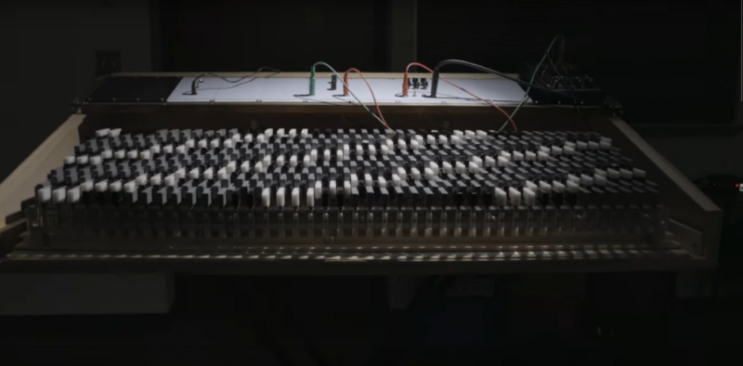
Enlarge (credit: Ryan Young/Cornell University)
Mathematician and early AI theorist David Rothenberg was fascinated by pattern recognition algorithms. By 1968, he’d already done lots of work in missile trajectories (as one did back then), speech, and accounting, but he had another esoteric area he wanted to explore: the harmonic scale, as heard by humans. With enough circuits and keys, you could carve up the traditional music octave from 12 tones into 31 and make all kinds of between-tone tunes.
Happily, he had money from the Air Force Office of Scientific Research, and he also knew just the person to build this theoretical keyboard: Robert Moog, a recent graduate from Cornell University in Ithaca, New York, who was just starting to work toward a fully realized Moog Music.
The plans called for a 478-key keyboard, an analog synthesizer, a bank of oscillators, and an impossibly intricate series of circuits between them. Moog “took his time on this,” according to Travis Johns, instructional technologist at Cornell. He eventually delivers a one-octave prototype made from “1960s-era, World-War-II-surplus technology.” Rothenberg held onto the keyboard piece, hoping to one day finish it, until his death in 2018. His widow, Suhasini Sankaran, donated the kit to Cornell in 2022.
Read 6 remaining paragraphs | Comments



